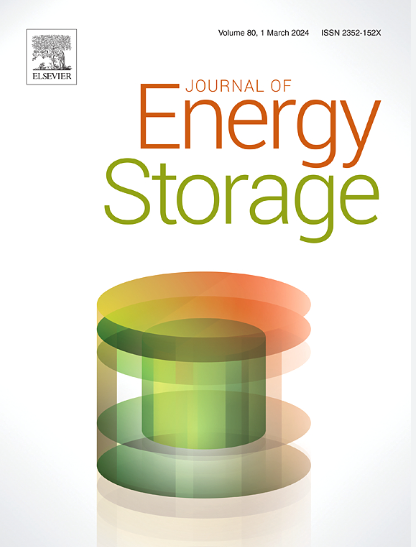Integration of energy storage systems and grid modernization for reliable urban power management toward future energy sustainability
IF 8.9
2区 工程技术
Q1 ENERGY & FUELS
引用次数: 0
Abstract
As the world struggles to meet the rising demand for sustainable and reliable energy sources, incorporating Energy Storage Systems (ESS) into the grid is critical. ESS assists in reducing peak loads, thereby reducing fossil fuel use and paving the way for a more sustainable energy future; additionally, it balances supply and demand. In addition, it guarantees integrated systems' secure and reliable operation while integrating intermittent renewable energy sources. This research proposes the Swarm Energy Storage Unit System (SESUS) to integrate nano-scale energy storage units. These units are efficient and space-saving. These systems use innovative nanomaterials to store and release energy quickly, with low losses and high efficiency. Swarm robots at the core of SESUS collectively manage and distribute stored energy. In this proposed work, mobile swarm units can adapt to changes in grid conditions and energy demands in real time. Power shortage and failure can be avoided with the help of SESUS because it increases grid resilience by offering distributed energy storage that can quickly react to changes in renewable energy supply or unanticipated grid disturbances. Innovative energy storage and grid modernization (GM) approaches, such as nano-grids with SESUS, provide unprecedented scalability, reliability, and efficacy in power management for urban demands. The experimental outcomes indicate the accuracy and acceptability in distribution optimization of about 98.8 %, efficacy of 97.5 %, reliability of 95.7 %, scalability of 97.9 %, and grid stability of 96.2 % compared to other existing models. Hence, a seamless integration of ESS and SESUS with existing grid infrastructure and the development of grid-specific solutions will give future energy sustainability.
求助全文
约1分钟内获得全文
求助全文
来源期刊

Journal of energy storage
Energy-Renewable Energy, Sustainability and the Environment
CiteScore
11.80
自引率
24.50%
发文量
2262
审稿时长
69 days
期刊介绍:
Journal of energy storage focusses on all aspects of energy storage, in particular systems integration, electric grid integration, modelling and analysis, novel energy storage technologies, sizing and management strategies, business models for operation of storage systems and energy storage developments worldwide.
 求助内容:
求助内容: 应助结果提醒方式:
应助结果提醒方式:


